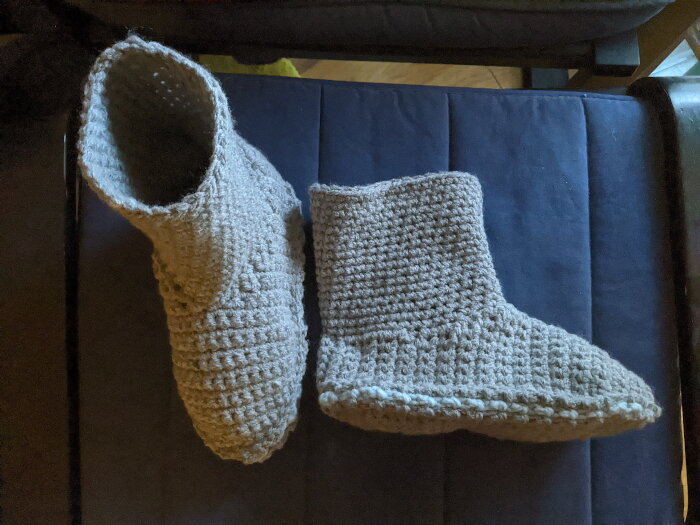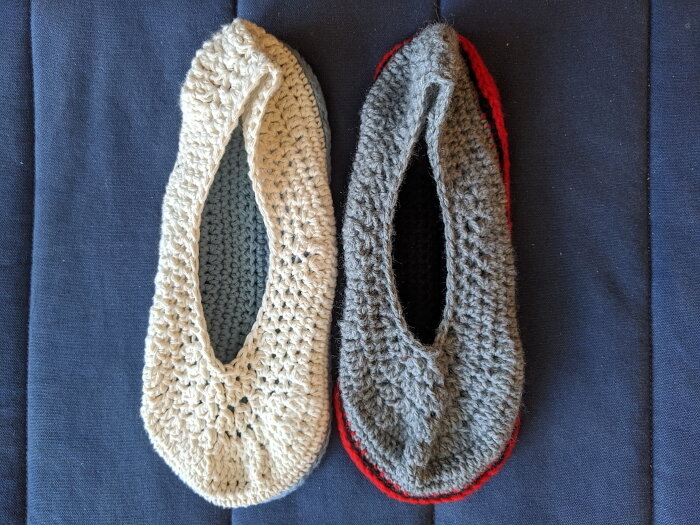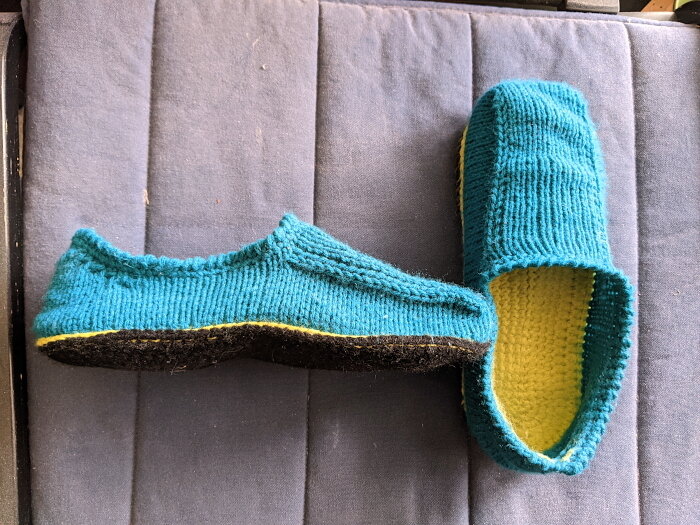I’m back to prototyping slippers made closer to shoe-making construction. Unlike last time, where the slippers were all for other people to borrow, these are all for me. I wear out slippers frequently enough that making a clutch of slippers and setting them aside for next winter is a good idea. Besides, it’s using up stash!
The first pair I made was from a free Bernat pattern which renders slippers that look like Ugg boots. I’m not a fan of actual Ugg boots, but they work out to be great slippers when the annual Toronto deep freeze happens in January-February.
The next pair were me improvising on a crocheted double sole to create ballet-type slippers. I did one pair in the regular acrylic leftovers I use for slippers, and one in dishcloth cotton for when the weather is in between slippers and bare feet.
The teal-and-lime pair are my most recent experiment. Crocheted double soles as usual, but then I pick up stitches and knit the uppers. That way the soles have a nice dense fabric (and then doubled), but the uppers get all the stretch and flexibility from knitting. (Yes, crocheters will claim I can crochet the whole thing, but since I know how to do both, I’m happy to switch between the two fabrics to get the effect I want).
I’ve currently got a medium-grey pair on the go with orange soles. They’re basically the same as the teal and lime slippers, but I’m trying to refine the shaping a bit (making the toe box narrower).
Next iteration, I want to try to fit the soles to my actual foot size better. The ultimate goal is to get a pair of these onto flip-flop soles to make true indoor (and maybe outdoor?) shoes.







